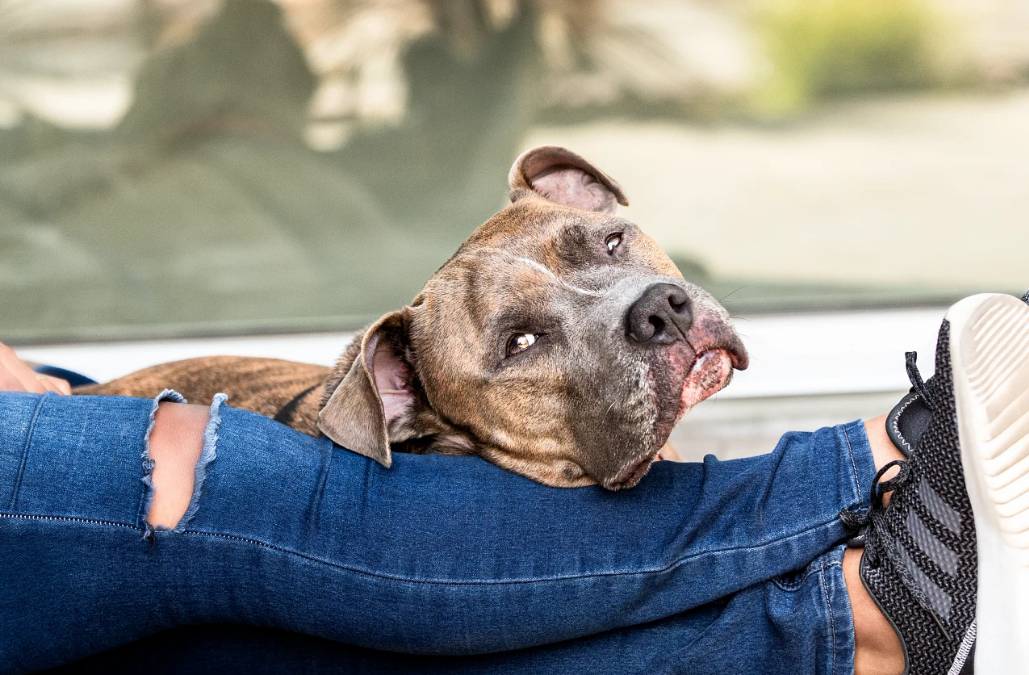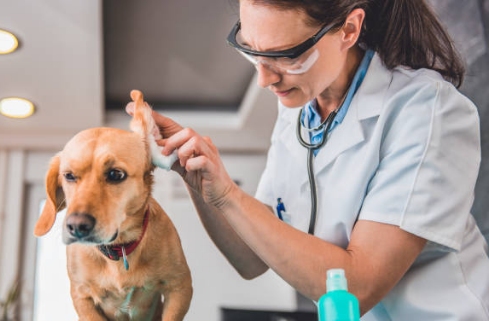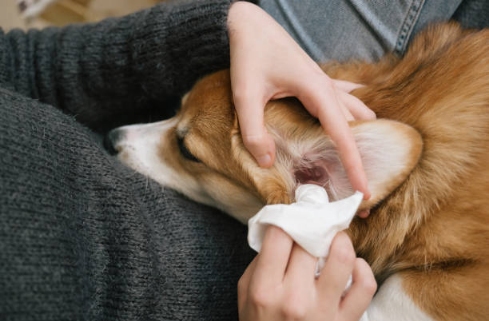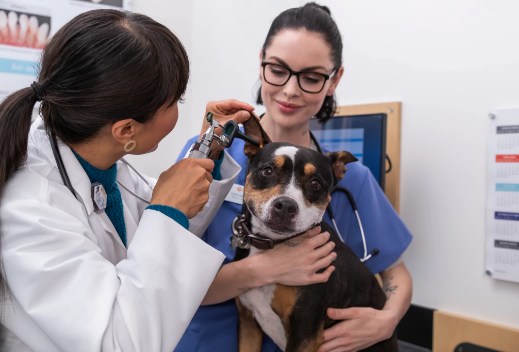ear infections in dogs
Smelly, irritating dog ear infections are really unpleasant for your pup.
Call the vet if your dog’s ears seem different, tender, or scabby, or if they look or smell funny.
Dog ear infection symptoms
- Head shaking and ear scratching
- Foul ear odor
- Black, yellow, brown, or gray ear discharge
- Ear pain
- Whining
- Rubbing ears against floor or furniture
- Walks with head tilted

Chronic and severe dog ear infection symptoms
- Ear crusts and scabs
- Hair loss around ears from scratching
- Affected ear droops lower than the other
- Swollen, narrowed ear canal
- Hearing and balance loss
- Strange eye movements
Dog ear infection is one of the most common dog diseases
In addition to itchiness, swelling, and goopy discharge, untreated dog ear infections can cause hearing and balance problems and even lead to complete hearing loss over time.

Types of dog ear infections: one ear, three different problems
There are three types of ear infections in dogs, each with different names depending on where the infection is located. Otitis externa is the most common dog ear infection, but it needs quick treatment to help stop it spreading down the ear canal to affect the middle and inner ear.
- Otitis externa, or outer ear infection
- Otitis media, or middle ear infection
- Otitis interna, or inner ear infection
Yeast in the ear can cause dog ear infections
Some dog ear infections are bacterial. Others are caused by a kind of yeast, Malassezia pachydermatis, that normally lives on your dog’s skin and in their ears. When the inside of your dog’s ear gets a little too moist, their ear canal becomes a perfect dark and cozy hollow for yeast (and bacteria too) to go wild and cause a full-blown ear infection. This is why many home remedies can make infections worse.
What causes ear infections in dogs?
If your dog seems to be an ear infection magnet, a few factors may be at play.

Excessive ear hair, or long floppy ears that cover the ear canal, can trap moisture and make the ear a very tempting home for bacteria and yeast.

Food allergies can increase the risk of ear infections.

Something stuck in your dog’s ears, like grass or seeds, or a tumor or growth can lead to an ear infection.
Dog ear infections share many symptoms with ear mites, and it’s not unusual for ear mites to lead to a secondary ear infection.
How to treat dog ear infections
Please talk to your veterinary team instead of trying home remedies or do-it-yourself internet solutions. It’s just too easy to mistake one ear issue for another — and many of these “remedies” don’t work and can lead to other ear problems.
What can the vet do to help my dog’s ear infection?
Typically, treating an ear infection is a two-step process.
- Clean your pup’s ears to help clear a path for the ear meds.
- Apply the prescription topical ear medication.

When you bring in your pet for ear issues, we’ll start by asking a few basic questions about your dog’s symptoms and when you think they started. We’ll also want to know if your dog has any known allergies, if it’s their first ear infection, and if they swim a lot.
Next, we’ll try to examine your dog’s ears with our otoscope, see if their eardrum is intact, and take a sample of ear discharge to help us identify what’s causing the infection. Because infected dog ears can be sensitive, we may recommend a light sedative or pain reliever to help us do this safely.
We’ll recommend treatment once we’re able to diagnose your pup’s ear issues. Different diagnoses need different treatments, which may include special ear cleaners and prescription medications to clear up infections, pain relief if your puppy’s ears are sore or tender, and sometimes even surgery to remove objects in their ear.
You may need to clean your dog’s ears and apply meds at home for a few weeks to help treat the infection. Your veterinary team may do the first cleaning and treatment right there during your appointment so you can watch how it’s done. Ask all the questions you need!
Follow all home care instructions carefully. Even if your dog’s ears start to look better, make sure to give your dog the full course of treatment. We’ll ask you to come in for a follow-up appointment to make sure your dog’s ears are on the path to recovery.
How can you help prevent ear infections?
In some cases, dog ear infections become chronic and require lifelong treatment and management. You can definitely help to lower your dog’s risk of ear infection with the help of your vet and a little TLC.
- Ask your vet how to properly clean your dog’s ears and how often to do it.
- Wipe your dog’s ears dry with a cotton ball or two after they go for a swim or have a bath.
- If your dog has major ear hair plus recurring ear infections, keep it clipped or ask your groomer to add it to their regular routine.
- Work with your vet to properly manage any underlying conditions, like allergies, to help prevent future ear infections.

Mentioned in this article

Ear yeast infections in dogs
Yeast in dog ears can cause a big problem.

How to treat a dog ear infection
What works to treat ears, plus what can hurt your pet.

Treating dog ear infections without a vet
What to know about popular home remedies.

Does your dog have ear mites?
What "coffee grounds" in ears might mean.

Need advice on flea control? Ping Pet Chat™!
Whether it's 3 a.m. or 3 p.m., connect with a real veterinary professional for immediate petcare advice. It's included in all Optimum Wellness Plans®!
Log in to start chattingHow Banfield can help with ear care for cats and dogs
We take happy, healthy pet ears seriously! Our vets can help you find out what’s causing your pet’s ear issues, work with you on a treatment plan, and prescribe safe and effective medications to help treat your pet. We can even work with you to help prevent future problems.

We can work with you to help manage chronic ear infections. If you notice your pet is getting ear infection after ear infection, let’s discuss underlying causes, solutions, and possible prevention for your pet’s issues.
We can provide guidance for cleaning and medicating dog and cat ears. Infected ears can be tender, which may make it rough to treat them at home. Let us know if your pet absolutely refuses to cooperate — we’re here to help!
We can help identify and manage food or environmental allergies that can cause ear infections and skin itchiness and irritation. If you suspect an allergy is causing your pet to sneeze, wheeze, itch, or scratch, we’re here with professional guidance to help your pet.
Any other health concerns?
Just let us know. We’re here to help with loving veterinary care, including your pet’s adorable ears.
 Mites and mange
Mites and mange Podcast - Not Just Fluff
Podcast - Not Just Fluff



